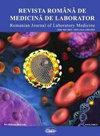寻常型银屑病患者马拉色菌的频率、分布及基因分型分析
IF 0.5
4区 医学
Q4 MEDICINE, RESEARCH & EXPERIMENTAL
引用次数: 0
摘要
背景:马拉色菌在寻常型银屑病的病因学中起重要作用。目的:本研究的目的是确定寻常型银屑病皮肤定殖马拉色菌的存在、频率、分布和基因分型,并与健康个体进行比较,并探讨其与疾病严重程度的关系。方法:选取34例牛皮癣患者(皮损/非皮损)和30名健康志愿者的头皮、手臂、身体和腿部皮肤样本。共采集392份刮皮标本,分离马拉色菌,在改良的dixon琼脂培养基上培养。马拉色菌鉴定采用常规培养方法。分离株采用PCR-RFLP方法进行基因分型。结果:在银屑病皮损标本中,分离到的马拉色菌种类最多的是全球马色菌和毛皮马色菌。同样,在健康志愿者中最常见的分离物种是全球支原体;其次是限制性m.a r限制性m.a rpodialis。银屑病患者头皮和腿部病变皮草分离率显著高于健康志愿者。疾病的严重程度与被分离的物种之间没有关系。结论:银屑病患者与健康对照组在马拉色菌的存在和频率上存在差异。因此,我们的研究结果支持了马氏菌可能与银屑病发病有关的观点。此外,我们推测银屑病患者皮肤微生物群调节的治疗应用将对银屑病的治疗做出积极的贡献。本文章由计算机程序翻译,如有差异,请以英文原文为准。
Frequency, Distribution and Genotyping of Malassezia Species in Patients with Psoriasis vulgaris
Abstract Background: Malassezia species are reported to play a role in the etiology of Psoriasis vulgaris. Objective: The aim of this study was to determine the presence, frequency, distribution, and genotyping of skin colonization of Malassezia species in Psoriasis vulgaris and to compare with healthy individuals and to investigate its relationship with the severity of the disease. Methods: Skin samples were taken from scalp, arm, body, and leg of 34 psoriasis patients (lesional/non-lesional skin) and 30 healthy volunteers. Overall, 392 skin scraping samples were taken for the isolation of Malassezia species, which were incubated on the modified-Dixon agar. Conventional culture methods were used for Malassezia species identification. In isolates, genotyping was carried out by PCR-RFLP method. Results: In the samples from psoriatic lesions, most frequently isolated Malassezia species were M.globosa and M.furfur. Similarly, the most frequently isolated species in healthy volunteers was M. globosa; followed by M.restricta and M.sympodialis. The M.furfur isolation rate in psoriatic scalp and leg lesions of the patients was significantly higher than in healthy volunteers. There was no relationship between the severity of the disease and the isolated species. Conclusion: It was found that there was a difference between patients with psoriasis and healthy controls regarding presence and frequency of Malassezia species. Therefore, our study results support the view that Malessezia species may be associated with the etiopathogenesis of psoriasis. In addition, we surmise that the treatment applications for the regulation of skin microbiota of psoriasis patients will contribute positively to the treatment of psoriasis.
求助全文
通过发布文献求助,成功后即可免费获取论文全文。
去求助
来源期刊

Revista Romana De Medicina De Laborator
MEDICINE, RESEARCH & EXPERIMENTAL-
CiteScore
0.31
自引率
20.00%
发文量
43
审稿时长
>12 weeks
期刊介绍:
The aim of the journal is to publish new information that would lead to a better understanding of biological mechanisms of production of human diseases, their prevention and diagnosis as early as possible and to monitor therapy and the development of the health of patients
 求助内容:
求助内容: 应助结果提醒方式:
应助结果提醒方式:


